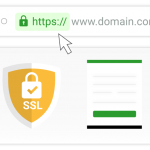
Setting up an SSL certificate in cPanel is a crucial step in ensuring the security and trustworthiness of your website. SSL (Secure Sockets Layer) certificates encrypt the communication between your website and its visitors, protecting sensitive information from interception and unauthorized access. In this blog post, we will guide you through the process of setting up an SSL certificate in cPanel, step by step.
Step 1: Purchase or Obtain an SSL Certificate
Before you can set up an SSL certificate, you need to obtain one. There are several ways to acquire an SSL certificate. You can purchase one from a trusted certificate authority (CA) such as Comodo, Symantec, or Let’s Encrypt. Some hosting providers also offer free SSL certificates through the cPanel interface, often in partnership with Let’s Encrypt.
Step 2: Log in to cPanel
To begin the setup process, log in to your cPanel account provided by your hosting provider. Once logged in, navigate to the “Security” or “SSL/TLS” section. The location of this section may vary slightly depending on the cPanel theme used by your hosting provider.
Step 3: Generate a Certificate Signing Request (CSR)
To obtain an SSL certificate, you need to provide a Certificate Signing Request (CSR) to the certificate authority. In cPanel, look for the option labeled “Generate an SSL Certificate” or “Generate CSR.” Fill in the required information, including your domain name, organization details, and contact email address. Double-check the information for accuracy and click on the “Generate” button.
Step 4: Submit the CSR to the Certificate Authority
Once you have generated the CSR, copy the provided CSR code. Next, visit the website of your chosen certificate authority and follow their instructions for submitting a CSR. This usually involves pasting the CSR code into a form on their website. Provide any additional information as required, and proceed with the submission.
Step 5: Verify Domain Ownership
To issue the SSL certificate, the certificate authority may require you to verify domain ownership. This verification process ensures that you have control over the domain for which you are requesting the certificate. There are typically different methods available for domain verification, such as email validation, DNS record verification, or file-based verification. Follow the instructions provided by the certificate authority to complete the domain verification process.
Step 6: Receive and Install the SSL Certificate
Once the certificate authority has verified your domain ownership and processed your request, they will issue the SSL certificate. You will typically receive the SSL certificate via email or through your certificate authority account. Download the certificate files, which may be in various formats such as PEM or CRT.
Return to your cPanel account and navigate to the “Security” or “SSL/TLS” section. Look for the option labeled “Install and Manage SSL for your site” or similar. In this section, you will find options to install the SSL certificate.
Step 7: Install the SSL Certificate in cPanel
In the SSL/TLS section of cPanel, you will find options to install the SSL certificate. Choose the appropriate option, such as “Manage SSL sites,” “Install an SSL Certificate,” or “Install a Certificate.” Select the domain for which you obtained the SSL certificate.
In the certificate installation interface, you will typically find fields to paste the SSL certificate, private key, and any intermediate certificate or CA bundle provided by the certificate authority. Copy and paste the respective certificate files into the appropriate fields. Double-check the accuracy of the pasted information.
Step 8: Apply the SSL Certificate
After pasting the SSL certificate, private key, and any intermediate certificate, proceed to apply the changes. Click on the “Install” or “Save” button to complete the SSL certificate installation process.
Step 9: Test the SSL Certificate
Once the SSL certificate is installed, it’s essential to verify its functionality. Visit your website using the “https://” protocol prefix. A properly installed SSL certificate will display a padlock icon in the browser’s address bar, indicating a secure connection. Additionally, you can use online SSL checker tools to verify the certificate’s validity and check for any errors or warnings.
Congratulations! You have successfully set up an SSL certificate in cPanel. Your website is now secured with an encrypted connection, ensuring the confidentiality and integrity of data transmitted between your visitors and your server.
In conclusion, setting up an SSL certificate in cPanel is a relatively straightforward process that significantly enhances the security and trustworthiness of your website. By following the step-by-step instructions outlined in this guide, you can obtain and install an SSL certificate, providing a secure browsing experience for your visitors and establishing credibility for your online presence.




















